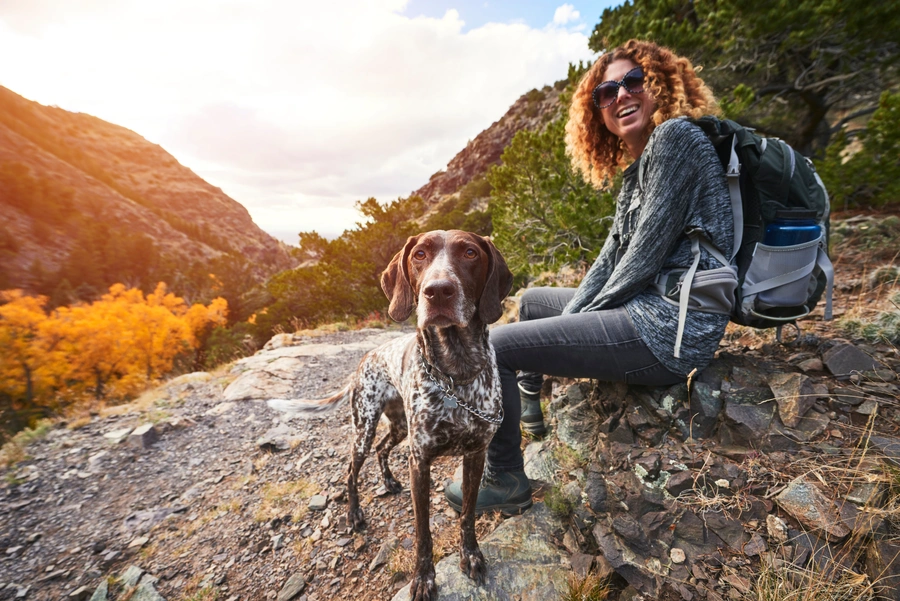Taking your dog on a hike can be a wonderful experience, as they can be just as enthusiastic and energetic as humans. It not only provides you with exercise and exploration but also offers the same benefits to your furry companion. However, it’s important to keep in mind that the wilderness poses certain challenges that require special attention to ensure the well-being of your dog. Here are some tips to guarantee a safe and enjoyable hiking adventure with your four-legged friend.
Pre-Hike Health Check
Before going on any outdoor adventure with your dog, a veterinary check-up is advisable. It is essential to confirm that all vaccinations are current and contemplate preventive measures for fleas, ticks, and worms. Additionally, your vet can offer guidance on your dog’s fitness levels and inform you about any specific concerns related to their breed that you should be mindful of during your hiking adventures.
Gear Up
Just as you would gear up for a hike, your dog also needs the right equipment:
Harness and Lead: A sturdy harness provides comfort and control, which is safer for navigating the terrain than a collar. A lead is essential for maintaining control and for the safety of your dog and other trail users.
Protective Clothing: Depending on the breed and the weather, your dog may benefit from protective clothing. For example, short-haired breeds can benefit from wearing a waterproof jacket to stay warm, and booties can protect their paws from rough terrain.
ID Tags and Microchip: Ensure your dog has a well-fitting collar with an identification tag, and that their microchip details are up to date.
Pack the Essentials
Bring along a doggy backpack if your dog is used to wearing one, and evenly distribute the weight. Key items include:
Water and Bowl: Dogs need regular access to fresh water. Bring more than you think you’ll need and a collapsible bowl for easy drinking.
Food and Treats: Make sure you have enough food for the day, with a little extra, and also have some special treats on hand for energy boosts and positive reinforcement.
First Aid Kit: Ensure you have a first aid kit specifically designed for dogs, complete with bandages, antiseptic wipes, tick removal tools, and any necessary medications.
Trail Etiquette
Respect other hikers and wildlife by keeping your dog on a lead where required and under control at all times. Be aware of your surroundings and your dog’s behaviour, ensuring they do not disturb local fauna or fellow walkers.
Hydration and Breaks
Taking regular breaks is essential to prevent your dog from getting overly tired and to ensure they have enough time for hydration and food intake. It’s important to closely observe your dog for any indications of fatigue or distress.
Be Waste Wise
Always clean up after your dog. Carry biodegradable bags and dispose of waste properly, maintaining the cleanliness and natural beauty of the environment.
Post-Hike Care
After your hike, check your dog for any signs of injury or discomfort. Pay particular attention to their paws and between their toes for cuts, thorns, or ticks. Ensure they are dry and warm, and provide a comfortable space to rest and recover.
Know When to Call it a Day
Always be prepared to cut your walk short if your dog is showing signs of exhaustion, discomfort, or anxiety. The goal is for the experience to be enjoyable for both of you, and pushing your dog too far can be dangerous.
Taking your dog on a hike can be an incredibly rewarding experience for both you and your furry companion. It fosters a stronger bond, promotes physical activity, and stimulates mental stimulation. By preparing properly, respecting the environment, and paying close attention to your dog’s needs, you can ensure that your shared adventures will be safe and enjoyable.

